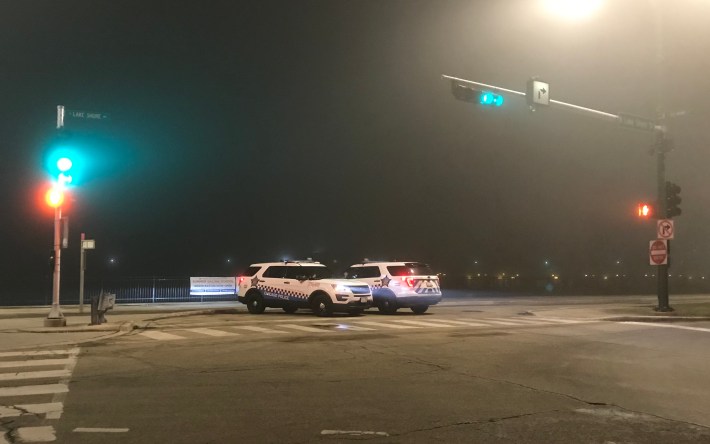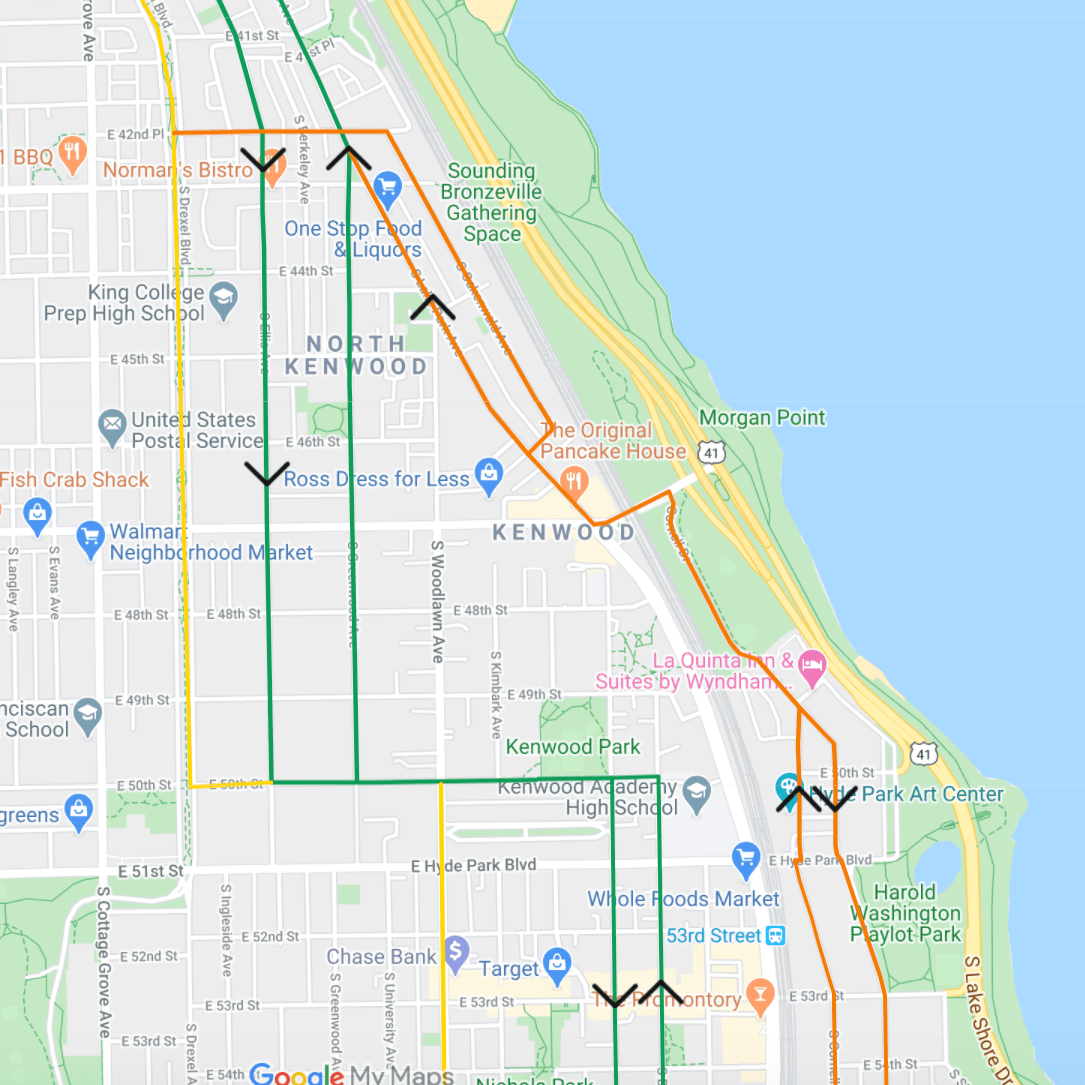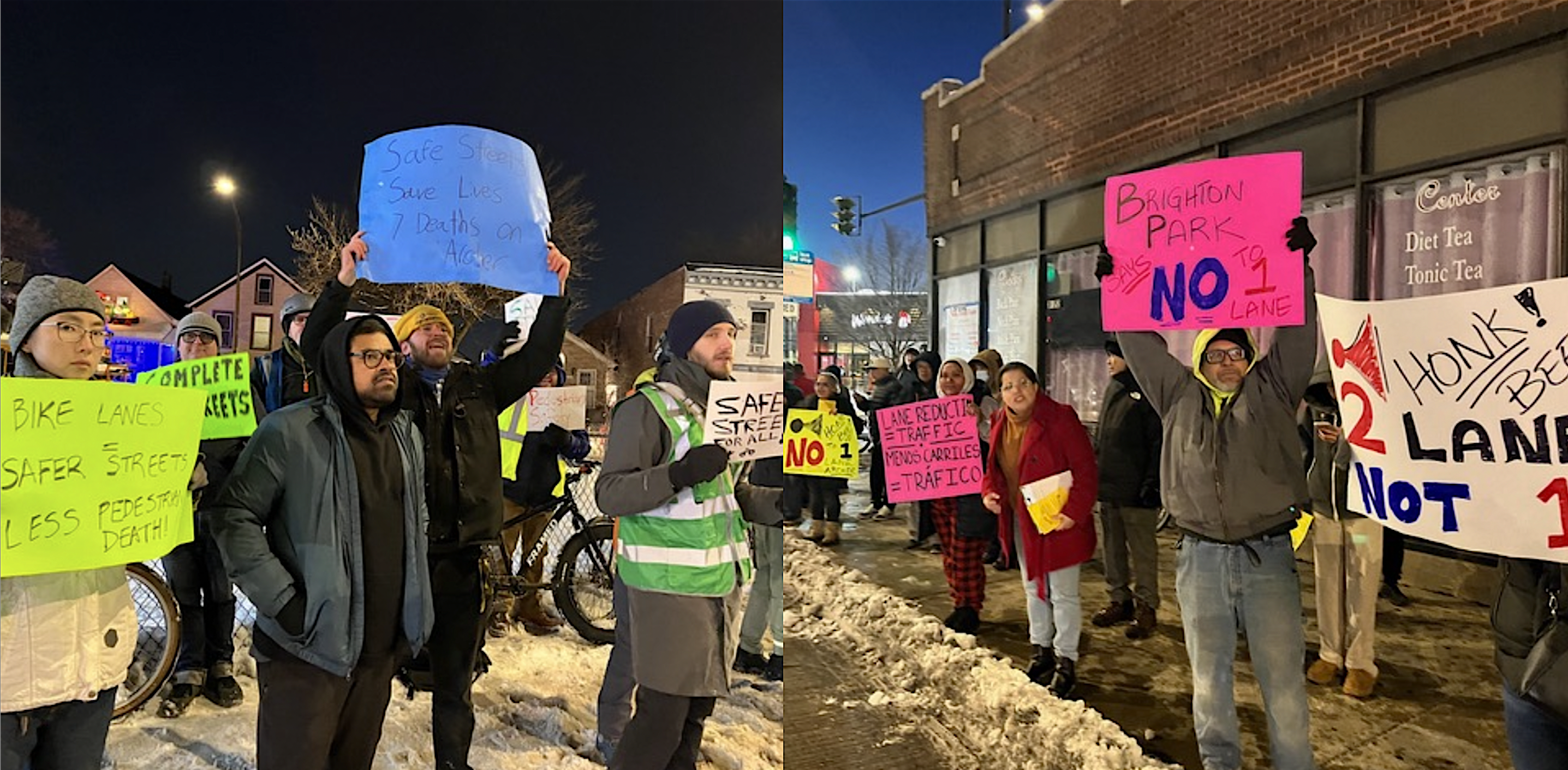Update 3/28/20 7 PM: Word on the street is that the segment of this route by the Prairie Shores development on the Near South Side, previously featured on the city's bike route, may be impassible at the moment. We're looking into it, but in the meantime please use 26th Street / King Drive / 35th Street / Cottage Grove Avenue as an alternative.
Update 3/29/10, 6:30 PM: After someone on Twitter asked why cyclists can't just ride on Inner Lake Shore Drive, I added an additional route in orange that uses as much of Inner LSD and similar streets as possible on the North Side, plus some new alternatives closer to the lake downtown and on the South Side, to maximize lake views. Note that the orange routes include some sections with heavier traffic and/or bus routes, so less-confident cyclist should generally stick to the green and yellow streets.
During the COVID-19 pandemic, Chicago mayor Lori Lightfoot's top priority should obviously be "flattening the curve" by slowing the spread of the virus and preventing our healthcare system from becoming overwhelmed. She has generally been doing a good job of addressing this existential crisis for our city.
However, Lightfoot's decision to completely shut down the entire lakefront last week after nice weather drew hundreds of people to the shoreline, including many who foolishly disregarded social distancing rules, has been controversial. Some local pundits lauded it as a bold and necessary move to save Chicagoans from themselves. And one upside of the lakefront closure has been the creation of "Where's Lightfoot" memes, showing the mayor sternly guarding the shoreline. Here's my contribution to the genre.

However, here at Streetsblog Chicago, some of us view the lakeshore closure as overkill, when unsafe crowding and social distancing violations might have been better addressed by posting warning signs; fencing off facilities that are unsafe to use during the pandemic, like playgrounds; and having city workers stationed on the lakefront to break up large gatherings and team sports. It's not clear that these strategies would have been less effective or more expensive than posting dozens of police officers up and down the lakefront at all hours, as is currently the case. (Note that we do not recommend violating the ban, which could get you a $500 ticket or, if you're really unlucky, jail time.)

And closing the lakefront parks is one thing, but completely shutting down the 18.5-mile Lakefront Trail, the city's essential car-free commuting route, which is normally open to the public even during hours when the rest of the shoreline is closed, is another. For example, many healthcare workers bike commute because it is a healthy form of transportation, and it's particularly useful during the pandemic, when transit should be avoided if possible. There are at least 14 hospitals located near the shoreline path, and as a result of the closure their employees won't be able to use the trail to get to work during the pandemic.

But we're not the only ones who think that the 24-7 closure of the Lakefront Trail was a mistake. Architecture student Kyle Lucas works jobs considered "essential" under Illinois' "Stay at Home" order, at a downtown hotel and a delivery market, and he normally uses the path to get to work.
Lucas launched a petition for the path to be reopened for essential bike commuting, and for the city to open a few streets in various parts of the city to make room for safe, socially-distanced, car-free walking, biking, and recreation. The latter is a strategy that many cities across North America and the world are using during the pandemic. More than 190 people have signed Lucas' petition in the last two days.
But yesterday I promised that I wasn't going to harp on the Lakefront Trail closure issue too much moving forward, so rather than cursing the darkness, let's light a candle. Below is an alternative route on relatively low-stress streets you can use to access destinations near the lakefront while the path is off-limits. You can also access it at TinyURL.com/PandemicCyclingRoute.
Green lines are mellow routes; yellow lines are shortcuts on busier streets. Orange lines are another alternative route stat sticks closer to the lake, including sections of Inner Lake Shore Drive. Less-confident cyclists should generally stick with the green route.
Please remember to maintain 6'+ social distance from other cyclists, especially while passing and while waiting at red lights, to avoid exposure to respiratory droplets. In the unlikely event that the route is too crowded with cyclists to do that, you should detour elsewhere.
Find more chill routes in the central city on the Chicago Reader's Mellow Chicago Bike Map, which I'll be expanding citywide later this summer. You can also find the locations of Chicago's on-street bikeways, generally on main streets, on the city's bike map.
Hopefully some kind of compromise can eventually be reached to allow bike commuting on the Lakefront Trail during the COVID-19 crisis. In the meantime, I hope the Low-Stress Lakefront Pandemic Cycling Route is useful for you. Feel free to drop me a line at jgreenfield[at]streetsblog.org if you need advice on how to connect with the route from your home or workplace.
Got any other suggestions for alternative routes while the Lakefront Trail is closed? Feel free to share them in the comments.
Here are some tips on preventing the spread of COVID-19, and advice for Chicagoans on what to do if you think you may have been exposed to the virus.







